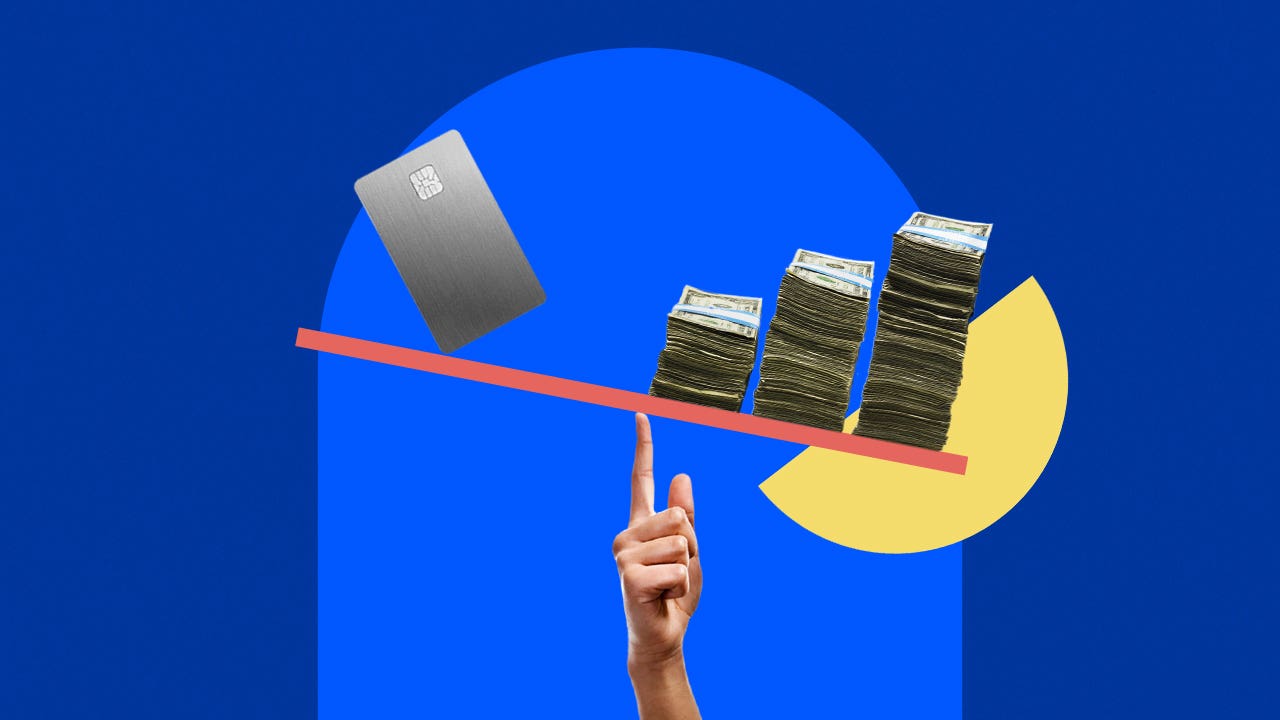What is an adjusted balance?

Key takeaways
- The adjusted balance is how credit card issuers determine how much interest you owe on your credit card balance after factoring in payments, charges and credits.
- Adjusted balance gives cardholders breathing room when making new purchases because these charges aren’t included in the current billing cycle.
- You’ll usually receive the lowest finance charge when a card issuer uses the adjusted balance method.
Credit card debt is common among Americans, so it’s likely that you experience an adjusted balance when using a credit card. An adjusted balance is one of several methods that credit card companies use to calculate the interest charged at the end of a cardholder’s billing cycle.
With the adjusted balance method, the credit card company starts with the balance at the end of the last billing cycle and subtracts any payments made during the current billing cycle. If you received any credits during the billing cycle, such as credits for returned payments, they will be factored into the calculation, as well.
The amount left over is your adjusted balance — and this balance determines how much credit card interest your issuer will charge to your monthly credit card bill.
What is the adjusted balance method?
When a credit card company uses the adjusted balance method to determine interest charges, every payment you make and every credit you earn will be subtracted from your total balance before your credit card company assesses the finance charge. This finance charge includes both the interest charged on your balance and any fees associated with your credit card account. Unless you have a card with a 0 percent intro APR offer, you will pay interest on any balance you carry beyond your due date.
The adjusted balance method gives consumers a grace period on new purchases since purchases made in the current billing cycle aren’t included in the adjusted balance. This is why the adjusted balance method typically gives cardholders the lowest possible finance charge.
How does adjusted balance work?
When you carry a balance on your credit card into the next billing cycle, you’ll owe that balance by your card’s due date, which is about one month after the end of a billing cycle. If you pay part of the balance from your last billing cycle during your current billing cycle, the issuer will subtract that payment from the balance you owe by your card’s due date. The difference between what you owe and what you pay is your adjusted balance, which is the amount that will be subject to interest charges and other fees after your due date.
You can continue to pay down what you owe until your due date; the final amount you owe on your due date is your adjusted balance. Ideally, this amount is $0, so you’ll never owe interest or pay late fees.
Example of the adjusted balance method
If you have a credit card balance of $5,000 at the end of your billing cycle and make a payment of $1,500 during the current billing cycle, your issuer will subtract this payment from the original credit card balance. Your adjusted balance would be $3,500.
Credit card issuers also consider credits and refunds when calculating your adjusted balance. Consider your new adjusted balance of $3,500. If you return a $500 item you bought in your last billing cycle and the refund posts to your account during the current billing cycle, the credit card company will adjust your balance to $3,000.
Credits and payments like this will continue to adjust your balance until your due date. Once you’ve carried your balance beyond your due date, your credit card issuer will apply your credit card APR to your balance. In this example, you’ll pay your card’s APR on a $3,000 balance instead of the $5,000 balance you carried into your current billing cycle.
Benefits of using the adjusted balance method
The adjusted balance method helps you reduce your monthly finance charge and limit credit card debt by updating what you owe based on your payments. If you want to avoid hefty interest charges on a large balance that you can’t pay right away, you can at least whittle down the debt from your last billing cycle during your current billing cycle.
Although you should aim to pay your entire balance before your due date, this is sometimes difficult, especially when expenses are high. The adjusted balance method lets you stay on top of what you can manage and limit the amount of interest you’ll pay overall.
When you should use the adjusted balance method
The adjusted balance method isn’t the only way of calculating a cardholder’s balance. Many banks and credit card companies use either the daily balance or average daily balance method.
In most cases, paying off your balance on a regular basis is the best way to save money on interest and finance charges. However, finding a credit card issuer that uses the adjusted balance method could also reduce the amount of interest you pay on your credit card — especially if you have good or excellent credit and can take advantage of a lower credit card interest rate.
Another way to limit what you owe in interest is to do a balance transfer to a card with a lower or an intro APR offer. If you’re interested in doing this, you’d first want to use a credit card balance transfer calculator to determine its advantages.
Read your credit card terms and conditions to learn whether your credit card issuer uses the adjusted balance method. If you’re applying for a new credit card, make sure you check the terms and conditions to learn how interest is calculated.\
Frequently asked questions
The bottom line
The adjusted balance method is one of the ways credit card companies calculate interest rates and finance charges. If your credit card issuer uses the adjusted balance method, all payments you make and credits added to your account during a given billing cycle will be subtracted from your total balance before any interest is charged.







